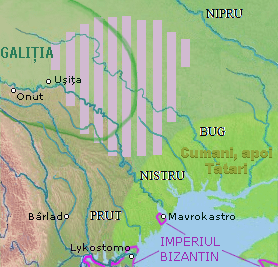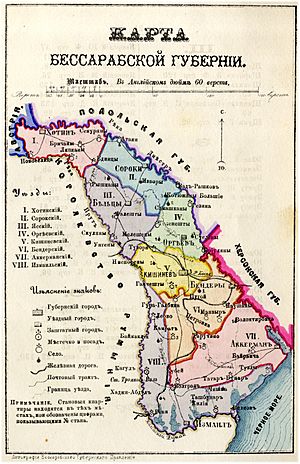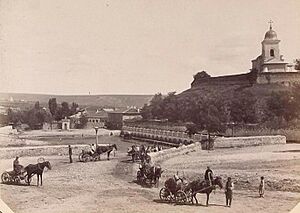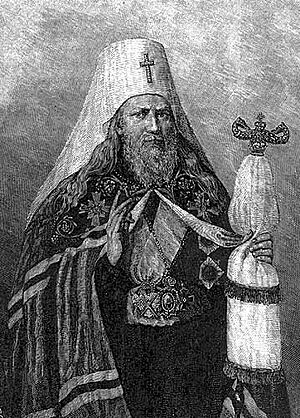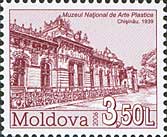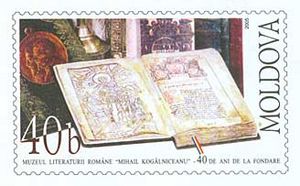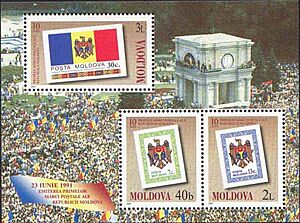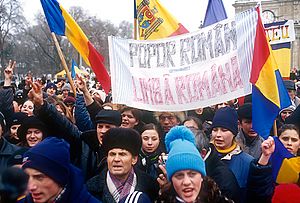History of Moldova facts for kids
The history of Moldova began in the 1350s. This is when the Principality of Moldavia was formed. This old principality was a early version of modern Moldova and Romania. From 1538, Moldavia was a vassal (a state controlled by a more powerful one) of the Ottoman Empire. This lasted until the 1800s.
In 1812, after a war between Russia and Turkey, the eastern part of Moldavia, called Bessarabia, was taken over by the Russian Empire. In 1918, Bessarabia became independent for a short time as the Moldavian Democratic Republic. Then, its Parliament decided to join with Romania. During World War II, the Soviet Union took it back from Romania. It became part of the Soviet Union as the Moldavian ASSR. Moldova stayed in the Soviet Union until it broke apart. In 1991, the country declared its independence and became the Republic of Moldova.
Contents
- Ancient Times and Early Middle Ages
- Principality of Moldavia
- Part of the Russian Empire
- Moldavian Democratic Republic and Union with Romania
- Part of Greater Romania
- World War II and Soviet Era
- Independent Republic of Moldova 1991
- Independence: The Early Years, 1991–2001
- Return of the Communists, 2001–2009
- Liberal Democrat and Socialist Administrations, 2009 to Present
- See also
Ancient Times and Early Middle Ages
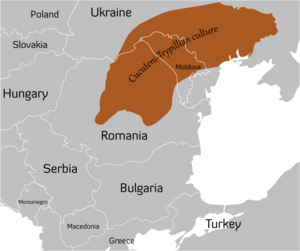
Very old flint tools, about 800,000 to 1.2 million years old, were found in Moldova in 2010. This shows that early humans lived here a very long time ago.
Over time, many different cultures lived in the land that is now Moldova. This was after the last ice age. These cultures included the Linear Pottery culture, the Cucuteni–Trypillian culture, and the Yamna culture. People in these cultures learned how to farm, raise animals, make pottery, and weave. They also built large settlements and towns. Some towns from the Cucuteni–Trypillian Culture were even bigger than any other towns on Earth at that time! They were built before the first towns in Sumer in Mesopotamia.
This area, from the Dnieper River to the Danube River, was very advanced during the Stone Age. But then, it became a path for invaders coming into Europe from the east. Many invasions happened, causing a lot of trouble and making it hard for people to rebuild before the next invasion. This continued until the 20th century.
In ancient times, different tribes lived in Moldova. These included the Bastarnae, Scythians, and Sarmatians. From the 1st to the 7th centuries AD, the southern part of Moldova was sometimes controlled by the Roman Empire and then the Byzantine Empire.
Because Moldova was on a route between Asia and Europe, many groups invaded it. These included the Goths, Huns, Avars, Magyars, Pechenegs, Cumans, and Mongols. The Genoa Republic also had colonists here. Old writings mention the Bolokhoveni, who were likely Romanian people living in the 13th century.
Principality of Moldavia
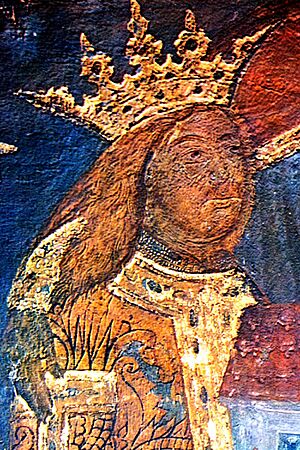
The Principality of Moldavia was created in 1359. It stretched from the Carpathian Mountains in the west to the Dniester River in the east. This area included modern-day Moldova, parts of Romania, and parts of Ukraine. Its main area was in the northwest, called Țara de Sus (Upper Land). The name of the principality comes from the Moldova River.
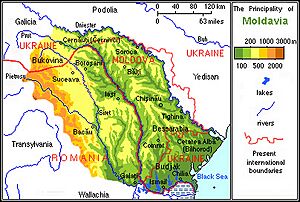
The founding of Moldavia is linked to two Romanian noblemen. Dragoş of Bedeu was ordered by the Hungarian king in 1343 to defend against the Tatars. Later, Bogdan I of Cuhea became the first independent prince of Moldavia in 1359. He left his lands and crossed the mountains after disagreeing with Hungarian rulers. Because of his success, Turkish documents later called Moldavia "Kara-Boğdan," meaning "Black Bogdan."
Moldavia also had strong ties with Poland. In 1387, Prince Peter I paid tribute to the Polish king. For the next 150 years, Moldavia and Poland were sometimes friends and sometimes fought.
The most famous Moldavian ruler was Prince Stephen the Great. He ruled from 1457 to 1504. He fought successfully against the Hungarian Kingdom, the Polish Kingdom, and the Ottoman Empire for most of his rule.

After Stephen III, weaker princes ruled. In 1538, Moldavia became a vassal state of the Ottoman Empire. It had to pay a part of its income to the Ottomans. Moldavia was not allowed to have foreign relations that hurt the Ottoman Empire. But it could manage its own internal affairs and foreign trade. Turks were not allowed to own land or build religious places in Moldavia.
In the 1700s, Moldavia often became a battlefield during wars between the Ottomans, Austrians, and Russians. In 1774, Russia occupied Christian Moldavia after winning a war against the Ottomans. In 1775, the Habsburg monarchy took about 11% of Moldavia, which became known as Bukovina. Then, in 1812, after another war, Russia took another 50% of Moldavia. This area became known as Bessarabia.
Part of the Russian Empire
Most of today's Moldova was once part of a historical region called Bessarabia. Before 1812, "Bessarabia" referred to a smaller area. But after the Treaty of Bucharest in 1812, Russia took the eastern half of the Principality of Moldavia. This larger region was then called Bessarabia.
At first, Bessarabia had some local freedom under Russian rule until 1828. It was governed by a "provisional government." In 1818, Tsar Alexander I tried to give more power to local leaders. But in 1828, Tsar Nikolai I took away much of this freedom. He gave supreme power to the Governor General. All government workers had to know and use Russian. However, Romanian was still sometimes used in documents until 1854.
After the Crimean War in 1856, some southern parts of Bessarabia were given back to Moldavia. This meant Russia lost access to the Danube river. In 1859, Moldavia and Wallachia joined to form the Romanian United Principalities. This was a state under the Ottoman Empire.
In 1870, local councils called zemstva were set up in Bessarabia. These councils, elected by nobles, merchants, and peasants, managed local economic and health issues. But political and cultural matters were still controlled by the Governor General. This was part of a plan to make the region more Russian. In 1871, Bessarabia became a governorate.
After another war, the Treaty of Berlin in 1878 gave independence to Romania. Even though Russia had promised not to take Romanian land, it re-annexed the southern part of Bessarabia. In return, Romania received Dobruja from the Ottoman Empire.
Public education was first managed by the church. Later, it was also managed by the zemstvos. At first, both Romanian and Russian were allowed in churches. But after 1871, the Russian language became the only one allowed in churches. A printing press in Chișinău was even closed to stop Romanian religious books from being printed.
Schools were opened in many cities and villages. But in 1835, the Russian authorities decided that education had to switch from Romanian to Russian within seven years. By 1867, Romanian was completely removed from schools. This made it hard for the peasant population to get an education. In 1912, only 10.5% of Moldavians could read and write. There were no primary schools teaching in the local language.
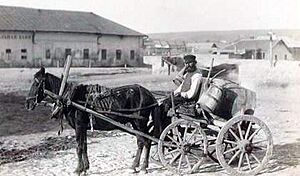
After 1812, the Russian authorities moved out many Nogai Tatar people. They encouraged Moldavians, Wallachians, Bulgarians, and Ukrainians to settle there. This was to use the land better and because there was no serfdom (a system where peasants were tied to the land). German colonists also settled in the region. Bessarabian Bulgarians and Gagauz people arrived from modern Bulgaria. Ukrainians came from other parts of Ukraine. Jews from other areas also settled in Bessarabia, mostly in cities.
These population changes meant that the number of Slavic people grew to more than a fifth of the total population by 1920. The proportion of Moldovan people slowly decreased.
Moldavian Democratic Republic and Union with Romania
After the Russian Revolution of 1905, a Romanian nationalist movement started in Bessarabia. This movement became much stronger in 1917.
To deal with the chaos from the Russian revolutions of 1917, a national council called Sfatul Țării was formed in Bessarabia. On December 15, 1917, this council declared the Moldavian Democratic Republic. It was part of the Russian Republic.
On January 26, 1918, Romanian troops entered Bessarabia. They said it was to keep order because many Russian soldiers had left the army. Some Moldavian leaders, like Ion Inculeț, protested the presence of the Romanian army. They worried the troops would stop land reforms.
After this, the council declared the Moldavian Democratic Republic independent on February 6, 1918. Then, on April 9, 1918, Sfatul Țării voted to join with Romania. This union had conditions, like Bessarabia keeping some local control and having land reform. However, the Romanian government soon started to reduce Bessarabia's local control. The members of the local councils were appointed by the king, not elected. The province was controlled by a royal-appointed official.
In December 1918, under pressure, Sfatul Țării officially dropped these conditions. But only a small number of members were present for this vote, so some people said it was not legal.
Britain, France, and Italy recognized this union. But the Soviet government did not. They said the union happened because the Romanian military occupied the area. They also said the council was not properly elected by the people of Bessarabia.
Part of Greater Romania
Bessarabia was under Romanian rule for 22 years after 1918. The 1920 Treaty of Paris recognized this, but it never fully came into force. The new communist Russia did not recognize Romania's rule over Bessarabia. The Bessarabian Soviet Socialist Republic was declared in 1919. Russia and later the Soviet Union saw Bessarabia as Soviet land under foreign occupation. They tried many times to get it back.
Meanwhile, the nearby region of Transnistria, which was part of Ukraine, became the Moldavian ASSR in 1924.
A land reform in 1918–1919 helped create a middle class in Bessarabia. Most people in the region lived in rural areas. However, the land plots given were small. Also, land was sometimes given to politicians who supported the Romanian government. Bessarabia remained mostly a farming region.
Education improved, with the number of people who could read and write rising from 15.6% in 1897 to 37% by 1930. But Bessarabia was still behind the rest of Romania. Romanian authorities also tried to make ethnic minorities more like Romanians. This was especially strong in Bessarabia because it had many different groups. This led to the closing of minority schools and cultural places.
New cultural and educational institutions were created in Chişinău. These included a music conservatory in 1919, a theology faculty in 1927, and the Agricultural State University of Moldova in 1933. The Museum of Fine Arts was founded in 1939.
The first regular flights to Chişinău started in 1926. A society of Romanian writers was formed in Chişinău in 1920. Radio Basarabia was launched in 1939. Important monuments like the Capitoline Wolf and the Stephen the Great Monument were opened.
World War II and Soviet Era
After the Soviet Union was formed in 1922, the Soviet government created the Moldavian Autonomous Oblast in 1924. This was on lands east of the Dniester River in Ukraine. Seven months later, it became the Moldavian ASSR, even though only 30% of its people were ethnic Romanian.
In 1939, a secret agreement between Nazi Germany and the Soviet Union (the Molotov–Ribbentrop Pact) gave Bessarabia to the Soviet "sphere" of influence. On June 26, 1940, the Soviet government demanded that Romania give up Bessarabia and Northern Bukovina. Germany and Italy told King Carol II of Romania to agree. On June 28, Soviet troops entered and occupied these areas.

The Soviet republic created after this was called the Moldavian Soviet Socialist Republic (Moldavian SSR). It was formed on August 2, 1940. It included most of Bessarabia and the western part of the old Moldavian ASSR. Some areas with many Ukrainians went to Ukraine. A small strip of Transnistria with many Moldovans joined the MSSR. This was done to discourage future Romanian claims.
Under early Soviet rule, many locals were sent away to places like the Urals, Siberia, and Kazakhstan. This happened regularly during the Stalinist period. For example, in June 1941, about 19,000 people were deported. In 1940–1941, about 90,000 people faced political punishments like arrests or executions.
In 1941, Romania joined the Axis invasion of the Soviet Union. Romania took back Bessarabia and Northern Bukovina. In occupied Transnistria, Romanian and German forces sent about 147,000 Jews from Bessarabia and Bukovina to camps. Over 90,000 of them died.
By April 1944, the Soviet Army took back northern Moldavia and Transnistria. By the end of August 1944, the whole area was under Soviet control. The Paris peace treaty in 1947 set the border between Romania and the Soviet Union to what it was in June 1940.
The territory remained part of the Soviet Union as the Moldavian SSR. The Soviet Union created a system for everyone to get an education. They also brought high-tech industry and science. Most of these industries were built in Transnistria and around big cities. In the rest of the republic, farming was developed. By the end of the Soviet period, most government officials were ethnic Moldovans. Russians and Ukrainians were often technical specialists.
The way Soviet rule was brought back caused a lot of anger. Many resistance movements formed. In 1946, a severe drought and high demands from the Soviet government caused a major famine. At least 115,000 peasants died.
Most political and academic jobs were given to people from non-Romanian ethnic groups. Only 17.5% of Moldavian SSR's political leaders were ethnic Romanians in 1940.
In the 1970s and 1980s, Moldova received a lot of money from the USSR budget. This was to develop industries, science, and housing. These investments stopped in 1991 when the Soviet Union broke apart. Moldova then became independent.
Independent Republic of Moldova 1991
Gaining Independence
During Mikhail Gorbachev's reforms (perestroika and glasnost), national feelings grew strong in the Moldavian SSR in 1988. In 1989, the Popular Front of Moldova was formed. It organized large protests. This led to Moldovan becoming the official language on August 31, 1989. The Latin alphabet was also brought back.
However, some groups did not like the Popular Front's policies. This was especially true in Transnistria, where many Russian and Ukrainian speakers lived. In the south, the Gagauz, a Turkic-speaking minority, also formed their own group.
The first democratic elections for the Moldavian SSR's Parliament were held in February 1990. The Popular Front won most votes. Mircea Snegur, a reformed communist, became chairman of the Parliament and then president. In May 1990, the government changed the republic's name to the Soviet Socialist Republic of Moldova. The next month, it declared itself sovereign. The Romanian tricolor flag with the Moldavian coat-of-arms was adopted. The Romanian anthem, Deșteaptă-te române!, became the anthem of the SSRM. A movement to unite Moldova and Romania also became active.
In August 1990, the government refused to give cultural and local control to Gagauzia and Transnistria. These regions had many ethnic minorities. In response, the Gagauz Autonomous Soviet Socialist Republic was declared in the south. In September, the Pridnestrovian Moldavian Soviet Socialist Republic (Transnistria) was declared in Tiraspol. Moldova's parliament immediately said these declarations were invalid.
By mid-October 1990, Moldovan volunteers were sent to Gagauzia and Transnistria. But talks between the leaders failed.
In May 1991, the country's official name became the Republic of Moldova. The Parliament's name also changed to the Moldovan Parliament.
During the 1991 Soviet coup d'état attempt in Moscow, Soviet military leaders tried to declare a state of emergency in Moldova. But the Moldovan government supported Russian president Boris Yeltsin. On August 27, 1991, after the coup failed, Moldova declared its independence from the Soviet Union.
The elections of Stepan Topal and Igor Smirnov as presidents of Gagauzia and Transnistria, and the end of the Soviet Union, increased tensions in Moldova.
Transnistria
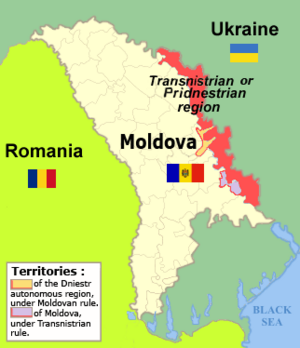
Transnistria is the region east of the Dniester River. Many Russian and Ukrainian speakers live there. The headquarters of the Soviet 14th Guards Army was in Tiraspol, the main city. On September 2, 1990, local authorities there declared an independent Pridnestrovian Moldavian Soviet Socialist Republic. They were afraid of growing nationalism in Moldova and that Moldova might reunite with Romania.
In the winter of 1991–1992, there were clashes between Transnistrian forces and Moldovan police. From March to July 1992, the conflict became a military war. After the Russian 14th Guards Army helped the separatists, the war stopped. An agreement was signed on July 21, 1992.
As of 2007, the Russian military is still in Transnistria. This is despite Russia signing agreements to leave and against the will of the Moldovan government. Moldova's government offers Transnistria a lot of local control. But Transnistria wants full independence. Officially, Transnistria is recognized as part of Moldova by other countries. But in reality, the Moldovan government does not control the territory.
Independence: The Early Years, 1991–2001
On December 8, 1991, Mircea Snegur was elected president without opposition. On March 2, 1992, Moldova was officially recognized as an independent state by the United Nations.
In 1992, Moldova had a short conflict with local groups in Transnistria. These groups were helped by the Russian 14th Guards Army and volunteers from Russia and Ukraine. Moldova, supported by Romania, failed to regain control over the breakaway region.
Starting in 1993, Moldova began to move away from Romania. The 1994 Constitution of Moldova used the term "Moldovan language" instead of "Romanian." It also changed the national anthem.
On January 2, 1992, Moldova started a market economy. Prices were no longer controlled by the government, which caused a lot of inflation. From 1992 to 2001, the country faced its worst economic crisis. Most people fell below the poverty line. In 1993, a national currency, the Moldovan leu, was introduced. The end of the planned economy meant that industries struggled to buy supplies and sell goods. Many industries stopped working, and unemployment rose sharply.
Moldova's economy started to improve in 2001. Since then, it has grown steadily. Many Moldovans also moved abroad to find work, mostly in Europe and Russia. Money sent back by these workers makes up a large part of Moldova's economy.
After the 1994 elections, the Moldovan Parliament took steps to distance Moldova from Romania. The new Constitution also gave local control to Transnistria and Gagauzia. In December 1994, a law was passed for the special legal status of Gagauzia. It was formed in 1995.
After winning the 1996 presidential elections, Petru Lucinschi became the country's second president in 1997. He was the former First Secretary of the Moldavian Communist Party. The government that followed faced constant political problems. This stopped any clear reform plans. The 1998 financial crisis in Russia also caused an economic crisis in Moldova. Living standards dropped, and many people emigrated.
New governments were formed. In July 2000, the Parliament changed the Constitution. Moldova became a parliamentary republic. This meant the president was elected by the Parliament, not directly by the people.
Return of the Communists, 2001–2009
In the February 2001 elections, the Party of Communists of the Republic of Moldova won 49.9% of the votes. They gained 71 out of 101 seats in Parliament. They elected Vladimir Voronin as the country's third president in April 2001. A new government was formed. Moldova became the first former Soviet state where a communist party returned to power.
In March–April 2002, the opposition Christian-Democratic People's Party organized large protests. They were against the government's plan to make Russian the second state language. The government then canceled these plans.
Relations between Moldova and Russia worsened in November 2003. This was over a Russian plan to solve the Transnistria conflict. Moldovan authorities refused it because it meant Russian troops would stay in Moldova for 20 years. The plan would also give Transnistria and Gagauzia power to block major policies. As of 2006, about 1,200 Russian soldiers are still in Transnistria. They guard a large ammunition storage. Talks between Transnistrian and Moldovan leaders are ongoing.
After the disagreement with Russia in 2003, Moldova started to move closer to the European Union. Moldova wants to sign an agreement with the EU.
In the March 2005 elections, the Communist Party won 46% of the vote. Vladimir Voronin was re-elected president in April 2005. In March 2008, Zinaida Greceanîi became the new head of government.
After the parliamentary elections on April 5, 2009, the Communist Party won 49.48% of the votes. Opposition leaders protested, saying the election was unfair. They demanded a new election. Observers said the vote was generally free and fair. But some observers worried about manipulation.
On April 6, 2009, protests were organized in Chişinău. Thousands of people gathered. They accused the Communist government of cheating in the election. The protest became a riot on April 7. Part of the crowd attacked government buildings. Police regained control and arrested many protesters. Some detainees reported being beaten by the police. The violence was condemned by international organizations. Three young people died during the protests. The opposition blamed police abuse. The government said the deaths were not related to the protests. Government officials called the rioting a coup d'état attempt and accused Romania of organizing it. The opposition accused the government of causing the riots. The political situation in Moldova remained unstable. The parliament could not elect a new president. So, new elections were held on July 29, 2009. The Communists lost power to a pro-European group called the Alliance for European Integration.
Liberal Democrat and Socialist Administrations, 2009 to Present
The new ruling group tried to change Moldova's constitution in 2010. They wanted the president to be elected by popular vote. But this failed because not enough people voted in the referendum. The parliamentary election in November 2010 kept the same balance of power.
On March 16, 2012, Parliament elected Nicolae Timofti as president. This ended a political crisis that had lasted since April 2009. Moldova had not had a full-time president since Vladimir Voronin resigned in 2009. In the November 2014 elections, pro-European parties kept their majority in Parliament.
In November 2016, Igor Dodon, a pro-Russia candidate, won the presidential election. He defeated Maia Sandu. The 2019 parliamentary election split votes between pro-Western and pro-Russian groups. The Socialists, who favor closer ties to Moscow, became the largest party. The ruling Democratic Party, which wants closer ties with the EU, came second. An opposition group called ACUM, which focused on fighting corruption, was third.
In 2019, Moldova had a period of dual power, known as the 2019 Moldovan constitutional crisis. In November 2019, Ion Chicu became the new Prime Minister. This happened after the previous government, led by pro-Western Maia Sandu, fell.
In November 2020, opposition candidate Maia Sandu won Moldova's presidential election. She became the first female President of Moldova.
In July 2021, President Maia Sandu's pro-Western PAS party won a snap election. Parliament then confirmed Sandu's choice of Natalia Gavrilita as the new prime minister.
On May 24, 2022, former president Igor Dodon was arrested. Dodon, a leader of Moldova's main pro-Russian opposition, was accused of taking bribes. Moldova's pro-Western and pro-Russian groups became more divided after Russia's invasion of Ukraine in February 2022.
On February 10, 2023, President Sandu accepted Prime Minister Gavrilita's resignation. She then appointed Dorin Recean as the new Prime Minister.
See also
 In Spanish: Historia de Moldavia para niños
In Spanish: Historia de Moldavia para niños


